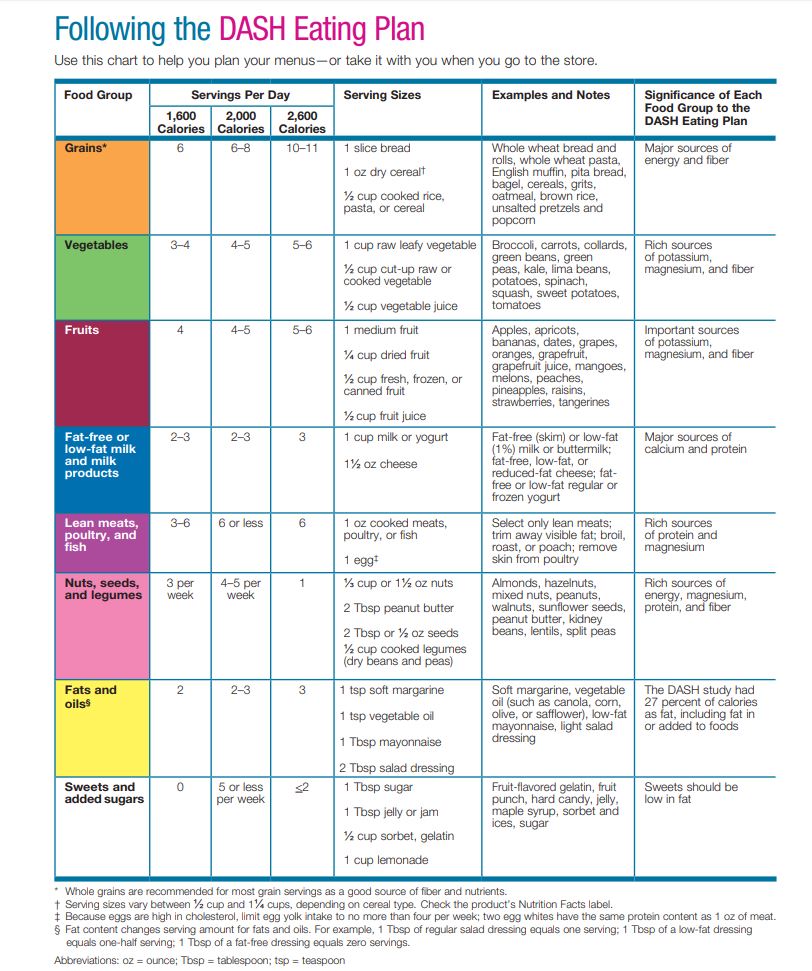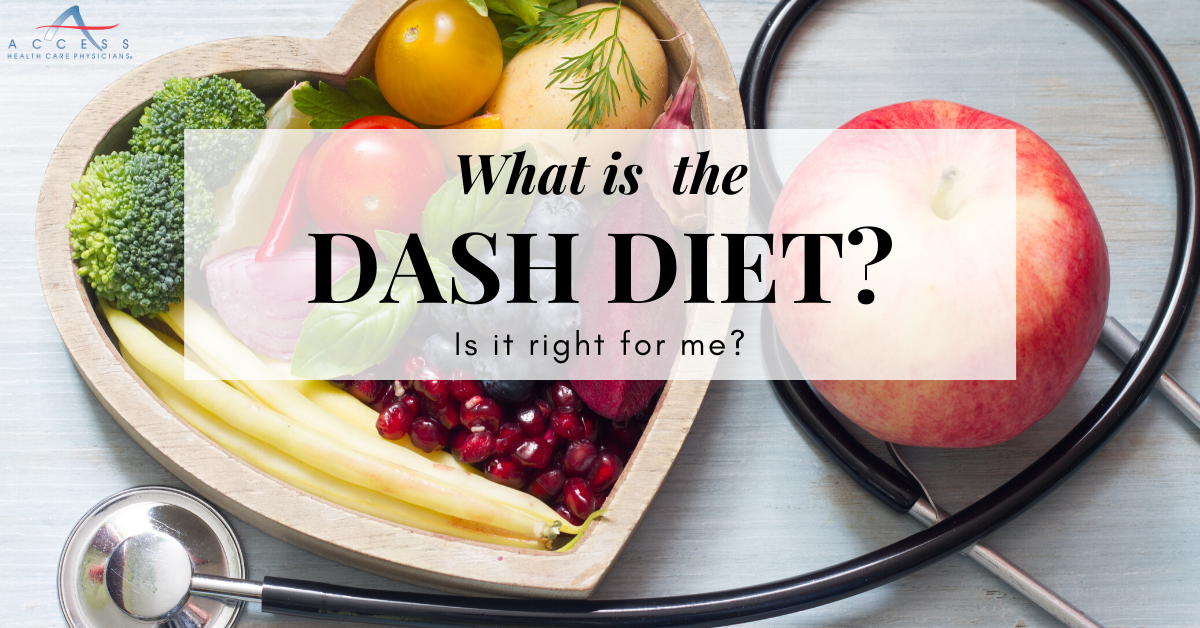DASH is an acronym that stands for Dietary Approaches to Stop Hypertension.
This diet is promoted by physicians, U.S. News & World Report and the National Heart, Lung and Blood Institute (NHLBI) for patients with hypertension. It is also recommended for those with kidney disease or diabetes. In fact, the DASH Diet is an ideal eating plan for all Americans, according to the United States Department of Agriculture (USDA).
While this diet may help participants lose weight, it is intended specially to help lower blood pressure. It requires no specific recipes or foods, simply enjoying a specific number of servings daily from several food groups.
What is Hypertension?
Let’s start with a few basics. When your heart beats, it creates pressure that pushes blood throughout your body. Blood pressure is the measure of the force of the blood flowing through blood vessels (which includes arteries, capillaries and veins).
Your blood pressure reading will contain two numbers, Systolic and Diastolic.
- Systolic Pressure is the top, or first, number in your blood pressure reading. It is created as the blood pumps out of the heart and into the arteries.
- Diastolic Pressure will be the bottom, or second, number and is created as the heart rests between each heartbeat.
According to the Centers for Disease Control and Prevention (CDC), about 75 million adults in the US have high blood pressure. When the tissue in your blood vessels has to endure the long-term increased pressure from hypertension, it causes damage and small tears. Hypertension has been linked to a significantly greater risk of heart failure, stroke, kidney disease and heart attack.
DASH Diet Basics
How does the DASH diet reduce hypertension? The DASH diet aims to reduce sodium intake foremost. There are two versions of the DASH diet, the standard and lower sodium. The standard encourages total sodium intake of 2300 mg (or 1 teaspoon of salt), while the lower sodium version drops that number to 1500 mg of sodium per day. In addition to this lower sodium intake, the DASH diet also typically aims for a calorie intake of 1699 – 3100 calories each day. It is also low in fat and cholesterol.
The specifics of caloric intake and more will depend on the person’s overall health, activity level and body weight. Talk to your doctor to learn more about your specific needs and recommendations.
What foods can I eat on the DASH diet?
The DASH diet is full of delicious foods including plenty of vegetables, fruits, low-fat dairy products and whole grains. It also includes legumes, poultry and fish. And, as an added bonus, it even allows for small amounts of red meat, fats and sweets.
Whole grains – These may include whole-grain breads, pastas, rice and cereals.
Vegetables – Try to enjoy a wide array of in-season fresh vegetables. Delicious fiber and vitamin-rich vegetables such as green, leafy vegetables, broccoli, sweet potato, carrots and squash.
Fruits – A delicious way to add magnesium, potassium, vitamins and fiber to your diet. Frozen, fresh and canned fruits (with no added sugar) can be enjoyed on the DASH diet.
Low-Fat Dairy Products– These can be an excellent source of calcium, vitamin D and protein. Low-fat milk, cheese and yogurt with low sugar are all great choices.
Meat – Fish, poultry and lean meat can be enjoyed in moderation. The DASH diet focuses on reduced meat consumption, at about 6 ounces per day. Keep in mind 3 ounces is about the size of a deck of cars.
Legumes, Seeds and Nuts – Excellent as a snack or added to a salad, these tend to be a good source of protein, fiber, potassium and other essential nutrients.
Fats and Oils – Your body needs fats to absorb some vitamins and minerals. Choose healthy fats and be sure to check nutrition labels to avoid trans fats and saturated fats.
Sweets – Great news! You can still enjoy a small amount of sweets while following the DASH diet! Just be sure to limit your intake to 5 servings or fewer per week.
This great chart below, provided by the NIH gives examples of items in each food group.

Unlike some diets, the DASH diet does not recommend specific recipes. Instead, it encourages you to focus on the overall plan. However, there are many DASH recipe books that offer ideas for those wanting to make the change and looking for a little extra guidance and inspiration.
The National Heart, Lung and Blood Institute (NIH) recommends making the transition slowly to the DASH diet.
- Try adding an extra serving of vegetables and fruit to a few meals over the course a few days.
- Begin to reduce your meat intake to 6 oz. per day.
- Try to focus on meatless (or vegetarian) meals several times a week.
- Try replacing simple grains with whole grains such as; brown rice and whole wheat pasta and bread.
- Try enjoying fruits as snacks and desserts instead of high calorie, high sugar alternatives.
What else should I know about the DASH diet?
Because of the increased fiber intake with this eating plan, it is possible to experience bloating or diarrhea. This is one reason to make the transition slowly, as mentioned before. In addition, if you have difficulty digesting dairy-based products, try lactose-free options or over-the-counter lactase-enzyme pills.
Your doctor may also recommend some weight loss to help reduce blood pressure and increase overall health. Remember the Centers for Disease Control and Prevention (CDC) recommends at least 150 minutes of moderate-intensity aerobic activity each week (or 75 minutes of vigorous-intensity aerobic activity) each week.
As with any diet change, always speak to your doctor first, especially if you are currently taking medications for high blood pressure.
Don't miss any of our updates! Be sure to "Like" us on Facebook & Instagram and check our blog page often.
Written by S. Campbell for Access Health Care Physicians, LLC


